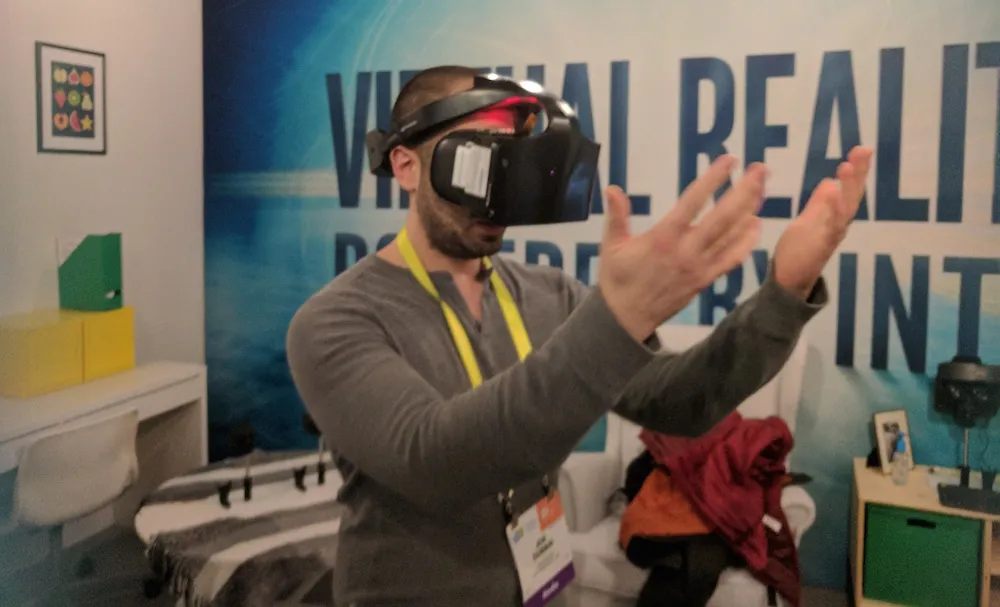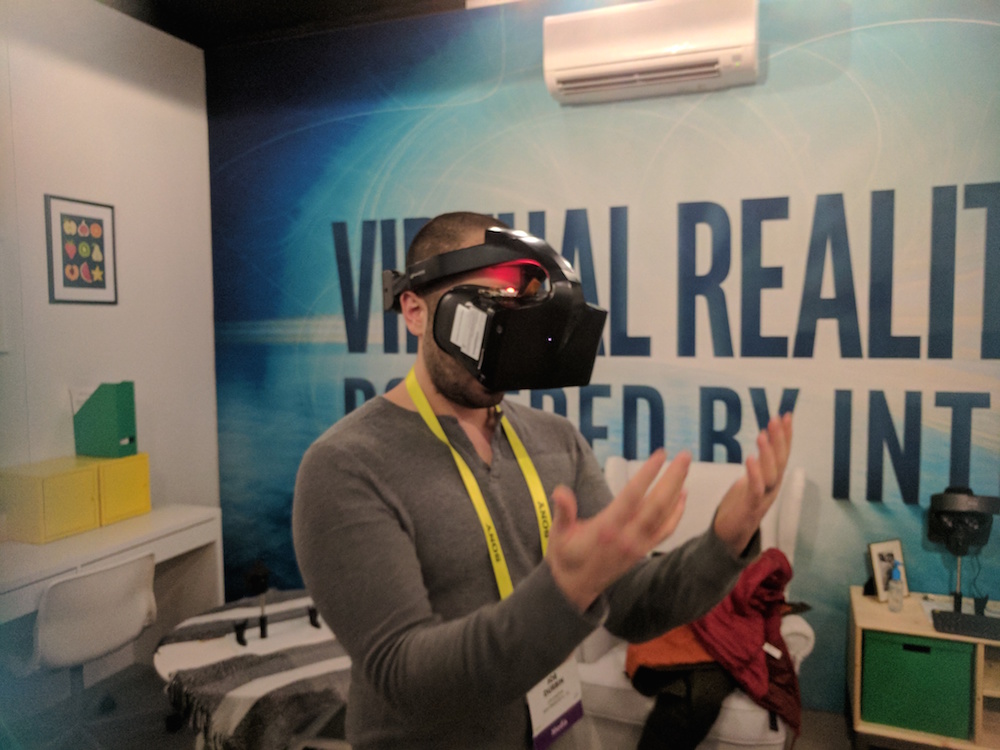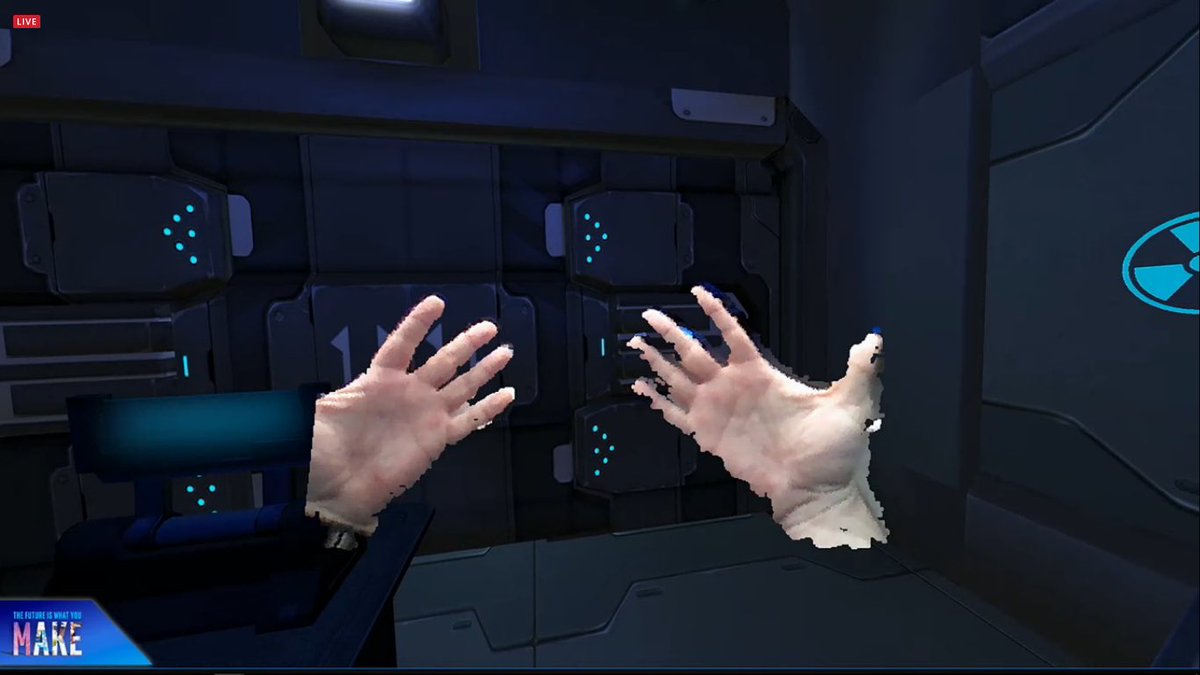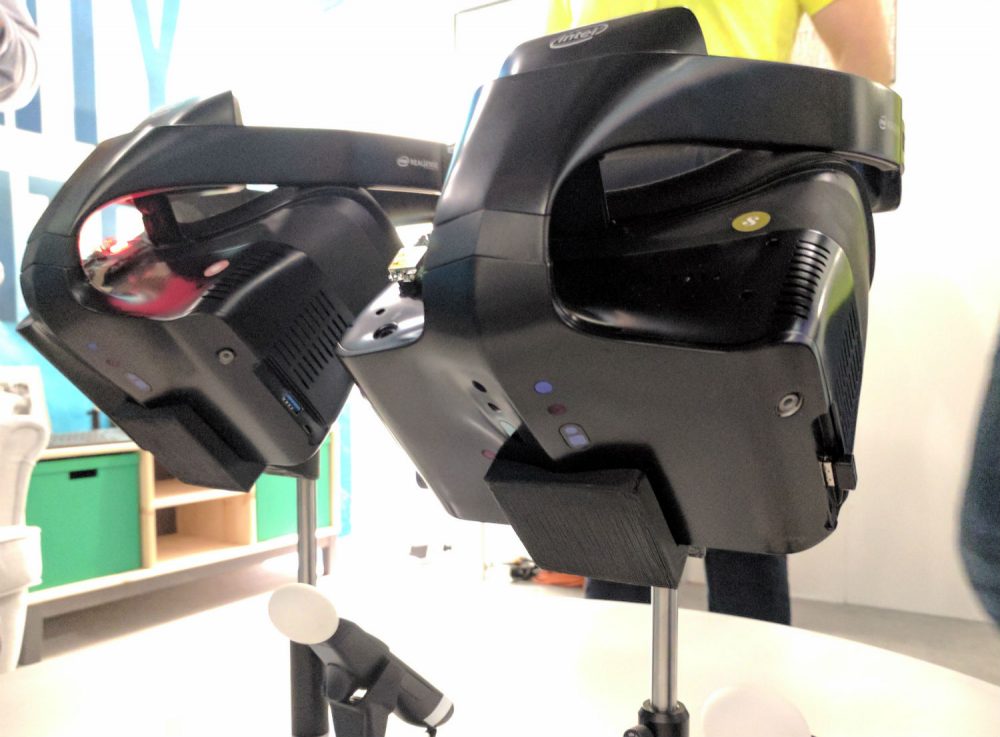During last week’s CES conference in Las Vegas one of the largest and most unforgettable booths on the sprawling show floor belonged to Intel.
The chip manufacturer occupied a two story main booth, a stage and bleacher for keynotes, with demo stations scattered around as well. Housed inside this labyrinth was Intel’s prized pig for this year’s conference: Project Alloy. The self-contained virtual reality headset makes use of Intel’s vision technologies to create a wireless, inside-out positionally tracked headset. Our initial hands-on report of project Alloy was only part of the story, and we came back for a second demo with a different Alloy prototype.
The difference between the Project Alloy headset we tried originally and this new version is the software inside. A member of the Alloy engineering team told us the second headset we would be trying is the unit they themselves work on every day. The “Mk. II,” as we will refer to it for the remainder of this story, was said to include more software optimization than the other demo units inside the booth. We were told the experience we encountered in our first Alloy demo was not optimized properly to show off the headset’s true potential.
Let There Be Hands
This new experience was essentially a developer testing ground. Inside, there were grids and cubes an engineer would use to gauge how colors and assets are rendering inside the headset. The virtual room also included two spinning golden cylinders. These cylinders are where we tried out the Mk. II’s built in RealSense hand-tracking.
Alloy’s many built-in sensors allow for real world objects, such as hands or other people, to be visualized once the person comes close enough to you. This feature is heavily dependent on light. Inside our dimly lit demo room my hands looked a bit ghostly through the headset. My hands appeared as a densely packed point cloud, but in the dim light some of these points were missing. The area in which the hands appear is also smaller than the overall field of view of the headset itself, which means there’s only a small rectangle of space that you hands or other people can appear inside.
However, the tracking of these ghostly hands was excellent. I could chip away at the spinning gold tubes with an entire hand, two fingers, one finger, etc. with precision. I only tried the hand tracking briefly and haven’t tried a comparable sculpting demo with Leap Motion, but Intel’s controller-less VR hand tracking showed some of the smallest movements of my finger resulting in notable change in the shape of the tube.
Tracking and Performance
Our biggest problem with the original Project Alloy demo was the performance of its inside-out positional tracking. That initial experience had a good amount of drift. The Mk. II was said to be running a “new low latency compositor and better prediction algorithms” to create a more solid experience. We were able to walk across the room, duck down to the ground, lean in toward objects, and jump into the air without noticeable latency. Importantly, though, the second demo was performed in an open room with fewer people in it while the first demo included a physical object in the center of the room that was mapped onto the virtual experience. No similar point of reference was seen in the second demo.
The biggest problem we encountered in Mk. II was curved visuals. A cube, for example, would noticeably stretch when you turned your head. We were told this was due to the image correction needing to be fine tuned, and that it could be solved in future builds.
Conclusion
Keep in mind that Alloy is not hardware Intel is planning to manufacture and sell itself. Instead, the plan is to develop it into a workable state and then license the technology to outside manufacturers that will turn these ideas into a product. We’ve seen two demos from Intel that show different pieces of a very complicated puzzle which needs to come together for a self-contained headset to be ready for the market. We still remain skeptical it will all come together with the polish needed to make it a successful consumer product this year, and hope to be pleasantly surprised.































